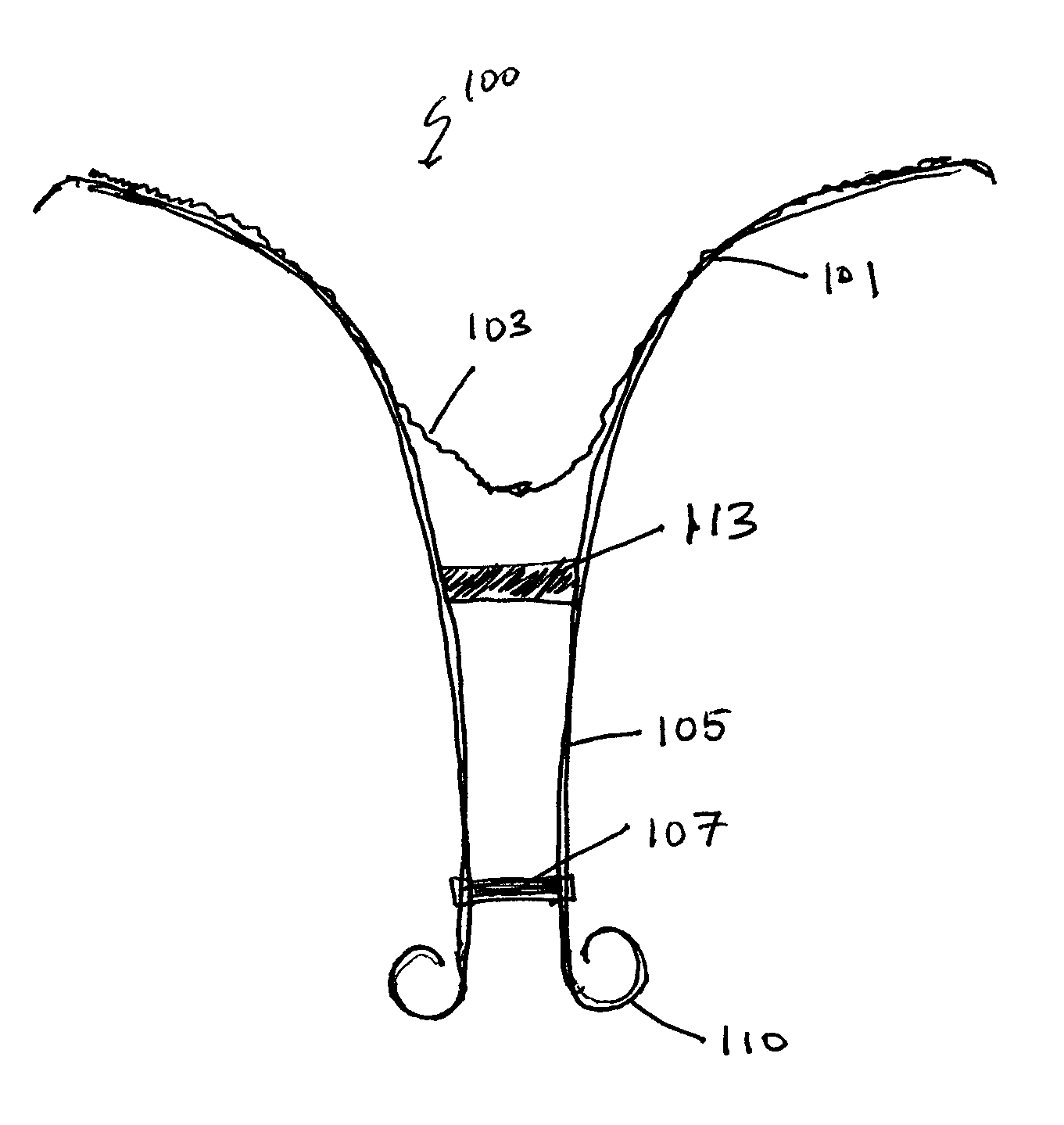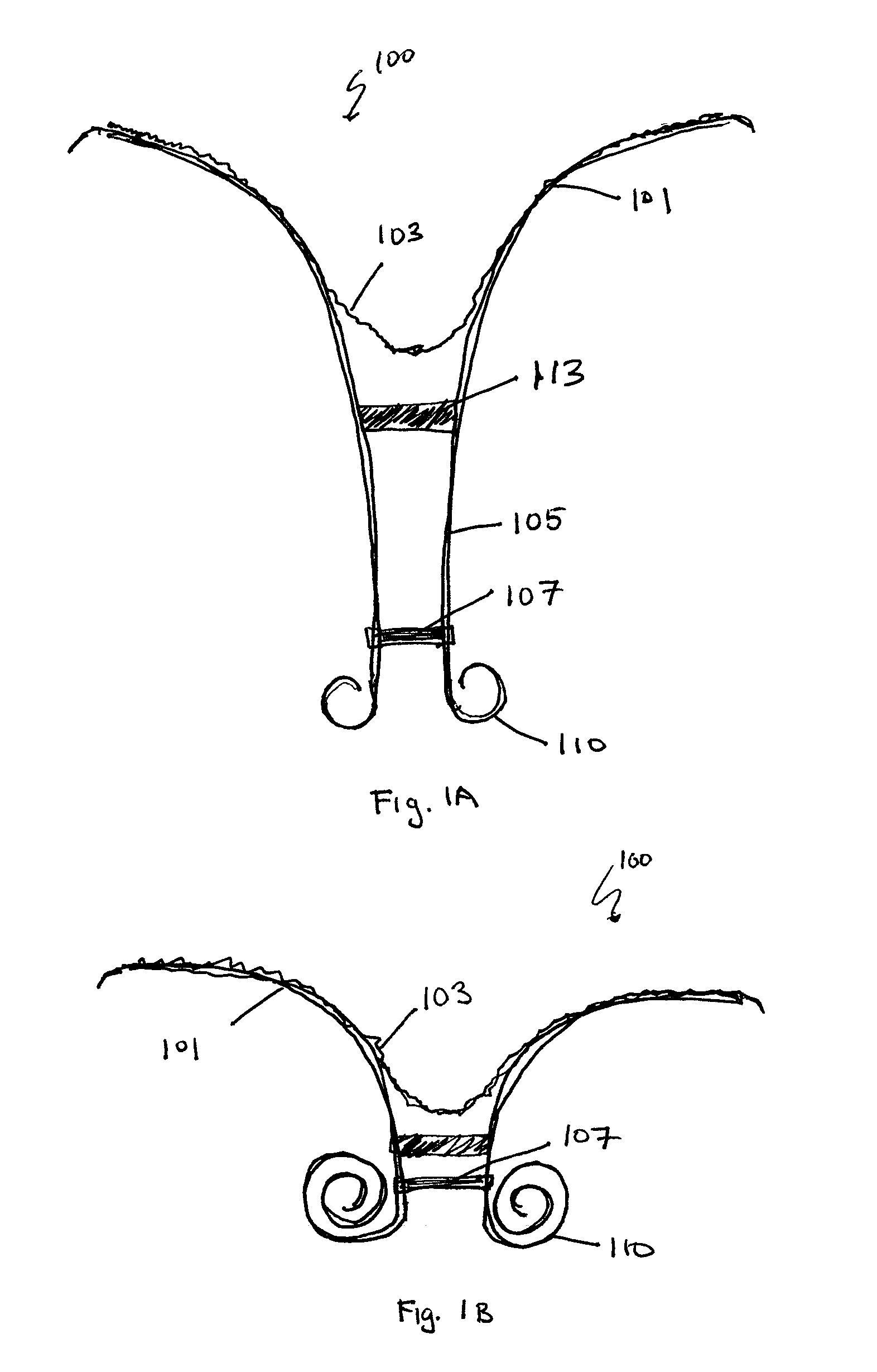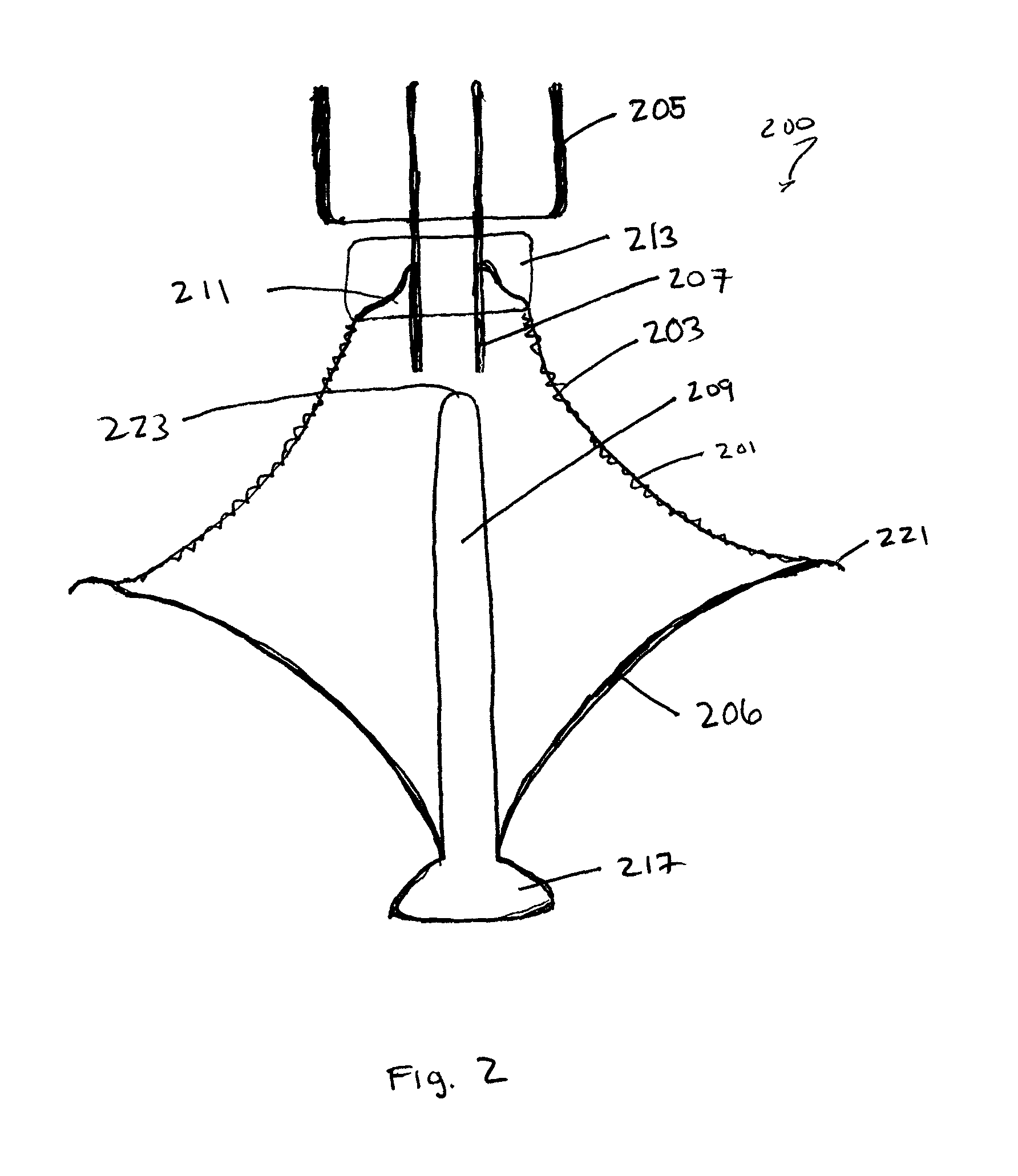Ventricular volume reduction
a technology of ventricular volume and ventricular valve, which is applied in the field of medical/surgical devices, can solve the problems of reducing the effectiveness of the heart, back-up of pressure in the vascular system behind the ventricle, and millions of hospital visits to the hospital, so as to reduce the risk of clot formation, and enhance the strength and/or durability of the stru
- Summary
- Abstract
- Description
- Claims
- Application Information
AI Technical Summary
Benefits of technology
Problems solved by technology
Method used
Image
Examples
Embodiment Construction
[0073]In general, described herein are implant for insertion into a patient's ventricle (e.g., left ventricle) to reduce ventricular volume by partitioning the ventricle into a productive and a non-productive portion. In some variations of these implants, a partitioning element, which may be a surface, extends at least partially across the diameter of the ventricle to partition the ventricle and thereby reduce the volume. In some variations the partitioning element is a membrane, which may be flexible. One or more supports may be used to support the membrane. An implant may also include one or more struts that can expand and collapse as necessary, and may span the diameter of the ventricle to position and / or anchor the partitioning element across the ventricle. In general, these implants may be delivered in a low-profile collapsed configuration and expanded in the ventricle to reduce the volume of the ventricle.
[0074]For example, in some variations the implants include a partitionin...
PUM
 Login to View More
Login to View More Abstract
Description
Claims
Application Information
 Login to View More
Login to View More - R&D
- Intellectual Property
- Life Sciences
- Materials
- Tech Scout
- Unparalleled Data Quality
- Higher Quality Content
- 60% Fewer Hallucinations
Browse by: Latest US Patents, China's latest patents, Technical Efficacy Thesaurus, Application Domain, Technology Topic, Popular Technical Reports.
© 2025 PatSnap. All rights reserved.Legal|Privacy policy|Modern Slavery Act Transparency Statement|Sitemap|About US| Contact US: help@patsnap.com



